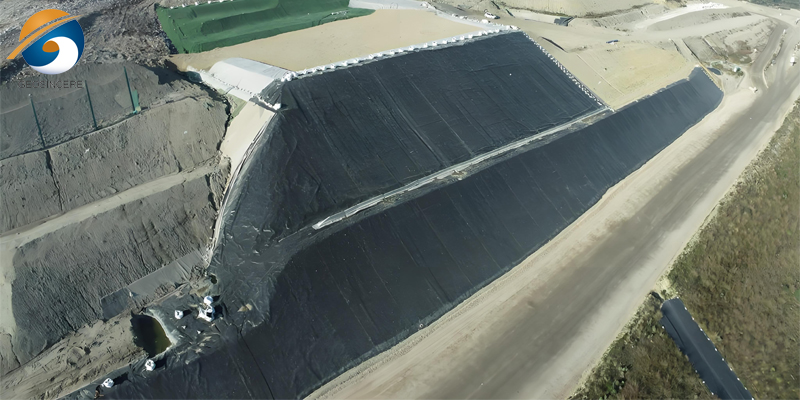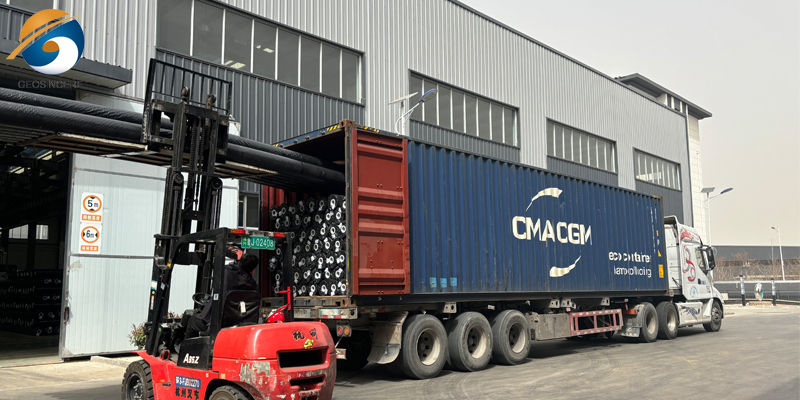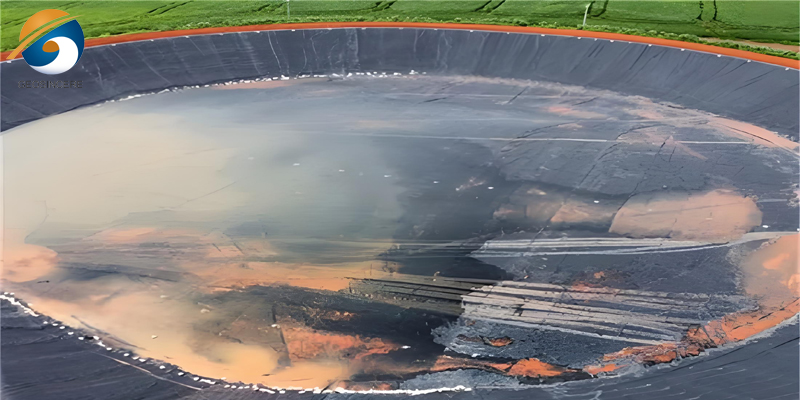How Do You Use HDPE Geomembrane 1.5 mm?
With the intensification of environmental problems and the development of industrial practices, HDPE geomembrane 1.5 mm has become an essential material for engineers and builders. This sturdy material is known for its excellent power and chemical resistance, making it suitable for applications such as landfill liners, aquaculture ponds, and wastewater control. Understanding how to correctly use HDPE Geomembrane 1.5 mm can significantly improve the effectiveness and sustainability of projects. Join us to learn about key installation and maintenance methods and best practices, ensuring you make the most of this modern solution!
1. What is HDPE geomembrane 1.5 mm?
HDPE geomembrane 1.5 mm is a high-density polyethylene (HDPE) material engineered for sturdy containment and safety in a variety of industrial and environmental applications. This 1.5 mm thick geomembrane is famend for its outstanding durability, chemical resistance, and impermeability, making it a preferred choice for projects that demand long-term reliability and environmental sustainability.
HDPE geomembrane 1.5 mm is no longer simply a material; it is a solution that combines strength, reliability, and sustainability to meet the needs of modern-day engineering and environmental challenges.
Key Features:
- Durability: HDPE geomembrane 1.5 mm is designed to face up to harsh conditions, inclusive of UV exposure, temperature fluctuations, and mechanical stress. It offers a service life exceeding 50 years in many applications.
- Chemical Resistance: HDPE is tremendously resistant to a wide vary of chemicals, consisting of acids, bases, and natural compounds. This makes it appropriate for purposes involving hazardous supplies and aggressive environments.
- Impermeability: With an extraordinarily low permeability charge (often beneath 10^-14 m/s), HDPE geomembrane 1.5 mm efficaciously prevents the migration of beverages and gases, making sure containment integrity.
- Flexibility: Despite its thickness, HDPE geomembrane 1.5 mm is bendy and can conform to more than a few terrains and structures, making set up less complicated and greater efficient.
- Recyclability: HDPE is a hundred percent recyclable, contributing to sustainable practices and lowering environmental impact.
2. What Is the Use of HDPE Geomembrane 1.5 mm?
HDPE geomembrane 1.5 mm is a versatile material widely used in various applications due to its durability and resistance to chemicals and environmental factors.
2.1 Landfill Liners
- Function: Prevents leachate from contaminating groundwater and surrounding soil.
- Application: Used as a barrier in municipal and industrial landfills.
2.2 Pond Liners
- Function: Retains water and prevents leakage in agricultural and recreational ponds.
- Application: Ideal for fish ponds, irrigation reservoirs, and decorative water features.
2.3 Wastewater Treatment
- Function: Acts as a barrier to contain wastewater and prevent seepage.
- Application: Used in treatment lagoons and holding ponds.
2.4 Aquaculture
- Function: Creates a controlled environment for fish farming.
- Application: Used to line fish tanks and aquaculture systems to retain water and support aquatic life.
2.5 Mining Applications
- Function: Protects the environment from contaminants in mining operations.
- Application: Used in tailings ponds and heap leach pads to manage toxic materials.
2.6 Civil Engineering Projects
- Function: Provides a waterproof barrier in various construction applications.
- Application: Used in underground structures, tunnels, and retaining walls.
2.7 Environmental Protection
- Function: Plays a critical role in preventing soil and water contamination.
- Application: Used in environmental remediation projects to isolate contaminated sites.
3. Why is HDPE Geomembrane 1.5 mm Important in Environmental Projects?
In the realm of environmental protection and sustainable development, HDPE geomembrane 1.5 mm stands out as a crucial material for its unparalleled ability to safeguard natural resources and prevent contamination. This high-density polyethylene (HDPE) geomembrane, with its 1.5 mm thickness, offers a robust and reliable solution for a wide range of environmental projects. Here’s why it is so important:
3.1 Exceptional Durability
HDPE geomembrane 1.5 mm is engineered to withstand the test of time. Its high-density polyethylene composition ensures it remains intact and functional for decades, even under harsh environmental conditions. This longevity is essential for long-term environmental protection projects, such as landfills and wastewater management systems, where containment integrity is paramount.
3.2 Superior Chemical Resistance
One of the most notable features of HDPE geomembrane 1.5 mm is its exceptional chemical resistance. It can withstand exposure to a wide range of chemicals, including acids, bases, and organic compounds, without degrading. This makes it ideal for applications involving hazardous waste, industrial chemicals, and aggressive environments, ensuring that harmful substances do not leach into the soil or groundwater.
3.3 Low Permeability
HDPE geomembrane 1.5 mm is virtually impermeable, with permeability coefficients often below 10^-14 m/s. This ensures that liquids and gases are effectively contained, preventing seepage and contamination. In applications like landfill liners and wastewater ponds, this feature is crucial for protecting water resources and maintaining environmental health.
3.4 Flexibility and Adaptability
Despite its thickness, HDPE geomembrane 1.5 mm is highly flexible and can conform to various terrains and structures. This adaptability makes it easy to install in complex environments, ensuring a seamless fit and reducing the risk of leaks and failures. Whether used in flat areas or on slopes, the material can be tailored to meet specific project requirements.
3.5 Recyclability
HDPE geomembrane 1.5 mm is 100% recyclable, aligning with modern environmental practices and reducing the overall environmental impact of projects. This sustainability aspect is particularly important in an era where reducing waste and promoting eco-friendly materials are key priorities.
3.6 UV and Weather Resistance
HDPE geomembrane 1.5 mm is formulated to resist UV degradation and weathering, ensuring it maintains its performance over long periods, even in direct sunlight. This resistance is crucial for outdoor applications, such as reservoir liners and wastewater ponds, where the material is exposed to the elements.
3.7 Mechanical Strength
HDPE geomembrane 1.5 mm exhibits high tensile strength, tear resistance, and puncture resistance. These properties ensure that the material can withstand mechanical stress during installation and use, reducing the risk of damage and ensuring long-term reliability.
4. Summarize
HDPE geomembrane 1.5 mm is essential for effective environmental management, resource conservation, and sustainable construction practices. Its versatility and durability make it a preferred choice in various industries.








